AI technology has revolutionized the way businesses and content creators approach content marketing. AI content creation tools like Narrato’s AI writer can make content processes more efficient, reducing the time and effort needed to create high-quality content, from generating topic ideas to drafting entire articles. However, publishers may often raise concerns over content that is entirely generated by AI. Though Google does not penalize AI-generated content as long as it is valuable to the audience, publishers may have a problem with a lack of human touch. To validate whether a piece is entirely written by AI or contains an acceptable portion of AI-written content, they could turn to AI content detection tools just as they use plagiarism detection tools to ensure originality.
But content creators and marketers can use AI detection tools to their advantage too. To ensure your content is not flagged for being AI-generated, you can run it through an AI content checker yourself to identify any patterns or inconsistencies that can be edited and eliminated. However, many of these AI content checker tools are inaccurate and often display false positives and false negatives. A TechCrunch article demonstrates how these AI writing detector tools fail to classify content correctly most of the time. So both publishers and content creators must take the results provided by an AI text detector with a pinch of salt.
In this blog post, we highlight 10 AI content detection tools that content marketers and creators should know about and how they can help optimize their content to achieve maximum impact.
TL;DR An overview of the 10 AI content detection tools listed below
Here are the 10 AI content detection tools you can try.
- OpenAI text classifier
- Copyleaks
- Originality.AI
- Winston AI
- Hugging Face
- Crossplag
- GPTZero
- Corrector App
- Sapling AI Detector
- GLTR

10 AI content detection tools to try
An AI content detector works on the same principle as large language model tools or generative AI tools. It is trained on large datasets to detect patterns and sequences of words and sentences to determine whether a piece of content was written by a human or artificial intelligence. We’ve discussed what are AI content detectors and how they work, in detail, in one of our previous posts. For now, let’s dive into the list of the best AI writing detector tools without much ado.
1. OpenAI Text Classifier
OpenAI is a pioneer in generative AI technology and it is, in fact, the creator of the GPT (generative pre-trained transformer) that most AI writing tools work on. But many content creators may be unaware that apart from AI content generators like ChatGPT, OpenAI has an AI text detector tool as well. This tool is named the AI classifier or text classifier.
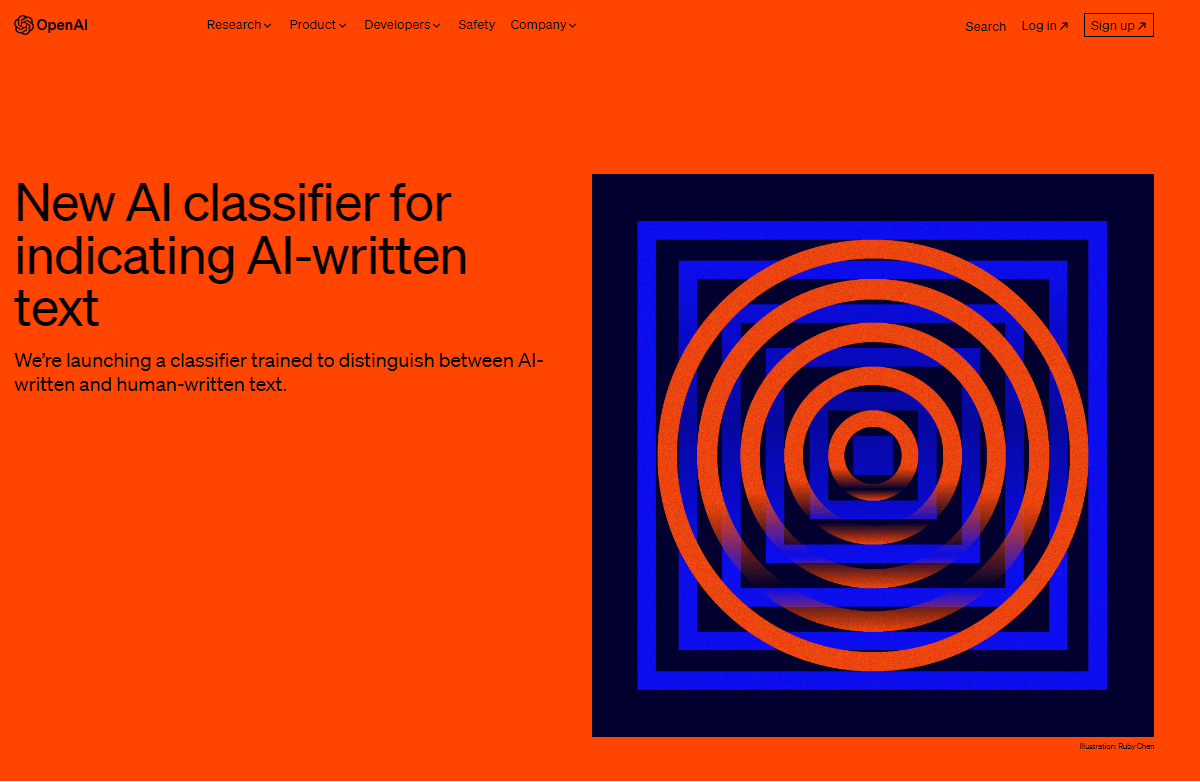
The text classifier by OpenAI is trained to differentiate between text written by humans and that written by AI tools from various providers. OpenAI does not believe that AI-generated content is unethical or inaccurate. It very clearly states in its product announcement that the text classifier is meant to mitigate false claims that AI-generated text was written by humans, use of AI content generators for academic dishonesty, or instances of AI chatbots positioned as humans.
When it comes to AI content detection accuracy, OpenAI honestly accepts that their classifier is not 100% reliable, as in the case of almost any AI content detector tool. The classifier can detect 26% of AI-generated text correctly as ‘likely AI-generated”. But it also gives false positives (flagging human-written content as AI-written) about 9% of the time.
The OpenAI classifier is also more reliable with long-form content rather than short texts and gives better results with text generated by more recent AI tools.
Pricing: The OpenAI text classifier is currently free to use. You just have to log in to your OpenAI account to access it.
2. Copyleaks
Copyleaks is one the most popular AI content detection tools out there today. Copyleaks offer multiple tools to ensure your content’s originality and authenticity. It has an AI content detector, a plagiarism checker, and an AI grader. The enterprise AI content detection solution can help analyze content generated using GPT4, ChatGPT, Human + AI or written by human writers.

When you run the check, the tool gives you an estimate of what percentage of the content may be written by AI. Copyleaks was primarily used by students and educators to ensure the originality of academic content. But with the introduction of the enterprise-grade AI content checker, it has become a handy tool for businesses too. The tool has a Chrome extension too. You can see how the tool works using the different example texts provided above the editor.
Pricing: Copyleaks offers a free trial that gives you just 25 credits (approx. 250 words). The paid plan starts at $8.33 per month for 1,200 credits.
3. Originality.AI
Another popular AI content checker is Originality.AI. It pitches itself as the most accurate content detector for serious content publishers. The tool is particularly built for SEOs, content marketers, and publishers. This AI writing detector can help check content generated by ChatGPT, GPT-2, GPT-3, GPT-4, Bard, and ONLY Paraphrase Detection. The tool apparently detected AI content with 96% accuracy when tested across 1200 data samples.
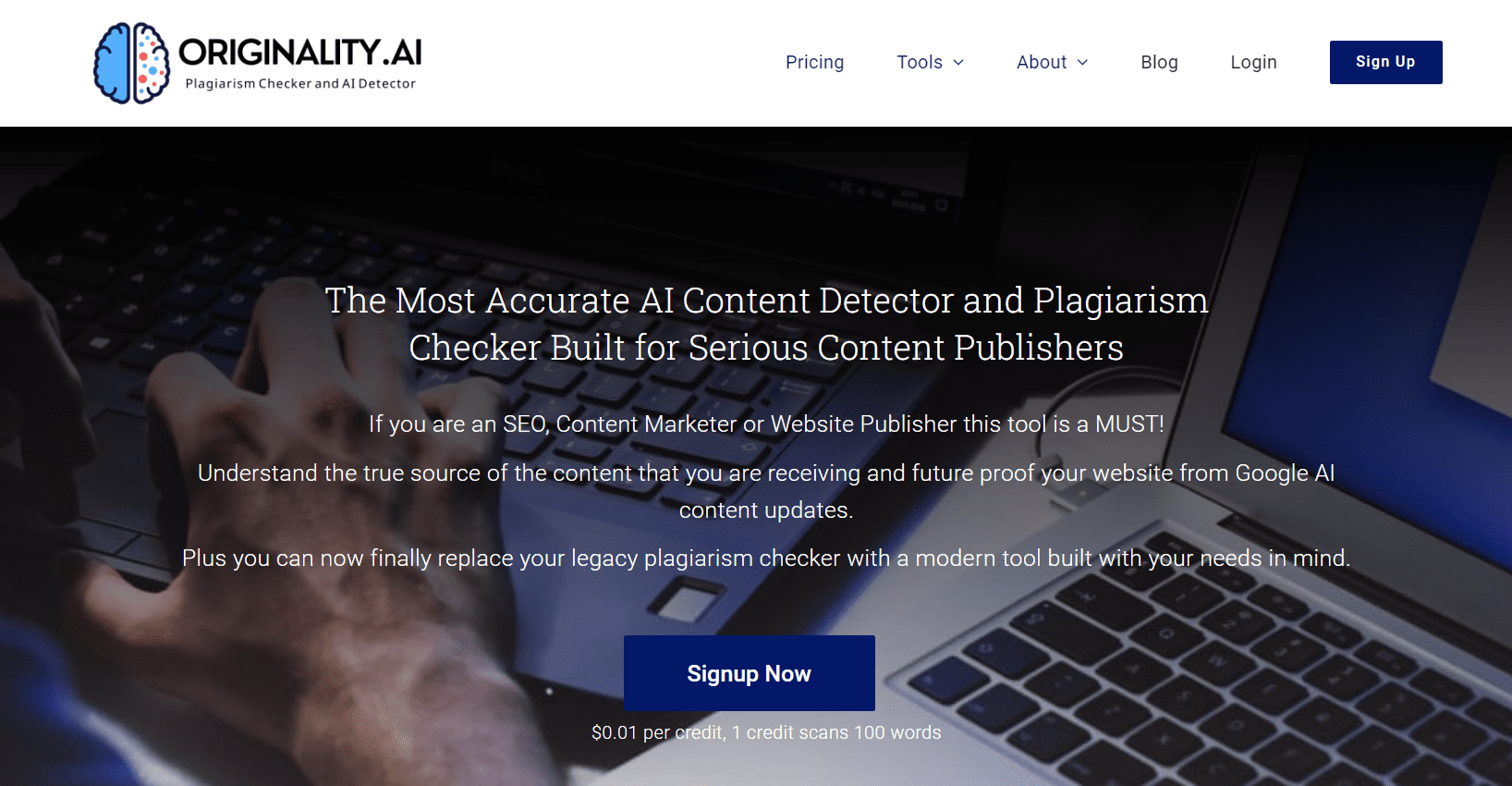
Despite the high accuracy across test samples, users have reported false positives when using Originality.AI. This calls for some amount of caution and not relying entirely on AI content detectors. Originality.AI also has a plagiarism checker, text compare, content optimizer, and other features worth trying.
Pricing: Originality.AI costs $0.01 per credit, and 1 credit scans 100 words.
4. Winston AI
Winston AI is another AI text detector used for both education and publishing. Winston AI also assigns your content with a Human score, where 0% means completely AI-generated and 100% indicates completely human-written text.

Like all other AI content detection tools, however, Winston only gives you a percentage of probability that a piece of content is generated by AI or written by a human. The tool currently supports 2 languages, English and French. To scan content, you can upload documents or even scans and photos of documents to analyze the text.
Pricing: Winston AI has a free plan that lets you scan up to 2,000 words. The Essential plan is priced at $12 per month and lets you scan up to 80,000 words.
5. Hugging Face
Hugging Face is a platform that lets you build various applications using machine learning. The user community on this platform builds AI tools that you can use, often for free. There are quite a few free AI text detectors on Hugging Face as well.
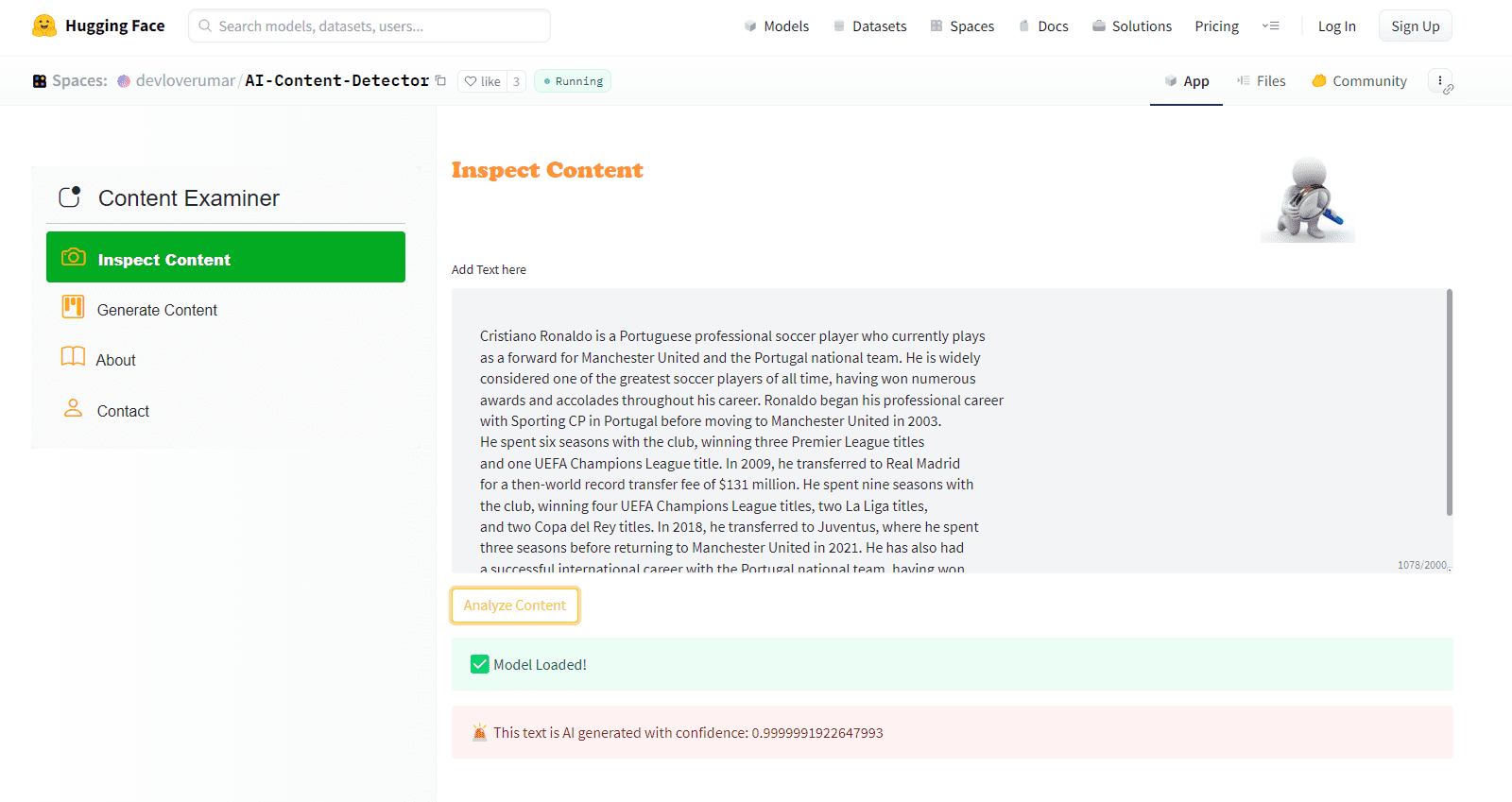
You can try out other AI content detectors and ChatGPT detectors on the platform as well.
Pricing: Most of these tools are free, but you may have to share your contact details to use them.

6. Crossplag
The Crossplag AI content detector lets you scan content for free on the website’s home page itself. However, you only get a few free scans and have to log in to access the tool for more. The platform puts out a disclaimer too that the free tool is version 1.0 and its accuracy may be lower than what they offer for institutional and commercial use.
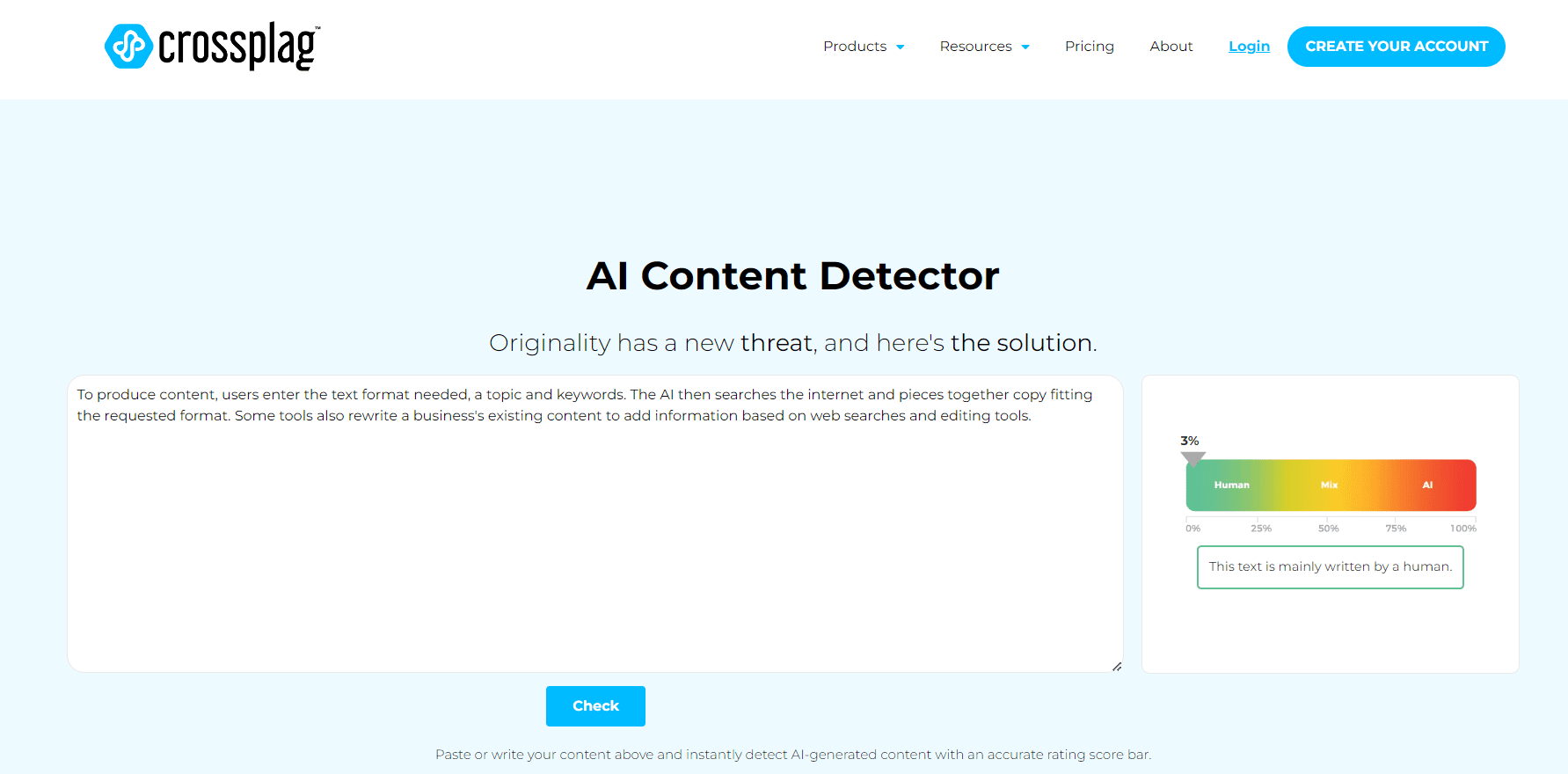
The tool uses machine learning algorithms and natural language processing techniques to detect AI-generated text in your content. Crossplag also acknowledges that it is impossible for any AI detector to accurately identify all AI-generated content. But using a tool like this can still be helpful in avoiding the use of lower-quality AI content in your marketing or business communication efforts.
Pricing: The free plan lets you scan up to 1,000 words. Crossplag has a pay-as-you-go plan that costs $9.99 and a bundle plan that costs $149.99.
7. GPTZero
Another popular AI text detector doing the rounds in the content marketing circle is GPTZero. Like most of the other AI content detector tools on this list, GPTZero also helps identify content generated by GPT3, GPT4, ChatGPT, and Bard.

GPTZero does not tell you what percentage of your text may be AI-generated or human-written. It only tells you if your text is entirely written by AI, partially AI-written, or entirely human-written. It does, however, highlight the sections that are most likely AI-generated. Furthermore, it also gives your content a ‘Perplexity score’ and a ‘Burstiness score’ that tells you the degree of randomness of your text.
Pricing: GPTZero does not mention its pricing plans on the website. You can contact the team to get pricing quotes.
8. Corrector App
Corrector App is another free AI writing detector that lets you scan up to 800 words in one go. It offers a percentage score indicated as ‘fake’, which shows what percent of the text is AI-generated. The platform claims that it also shows if some amount of your content is copied from other existing online content, which is basically a plagiarism check.
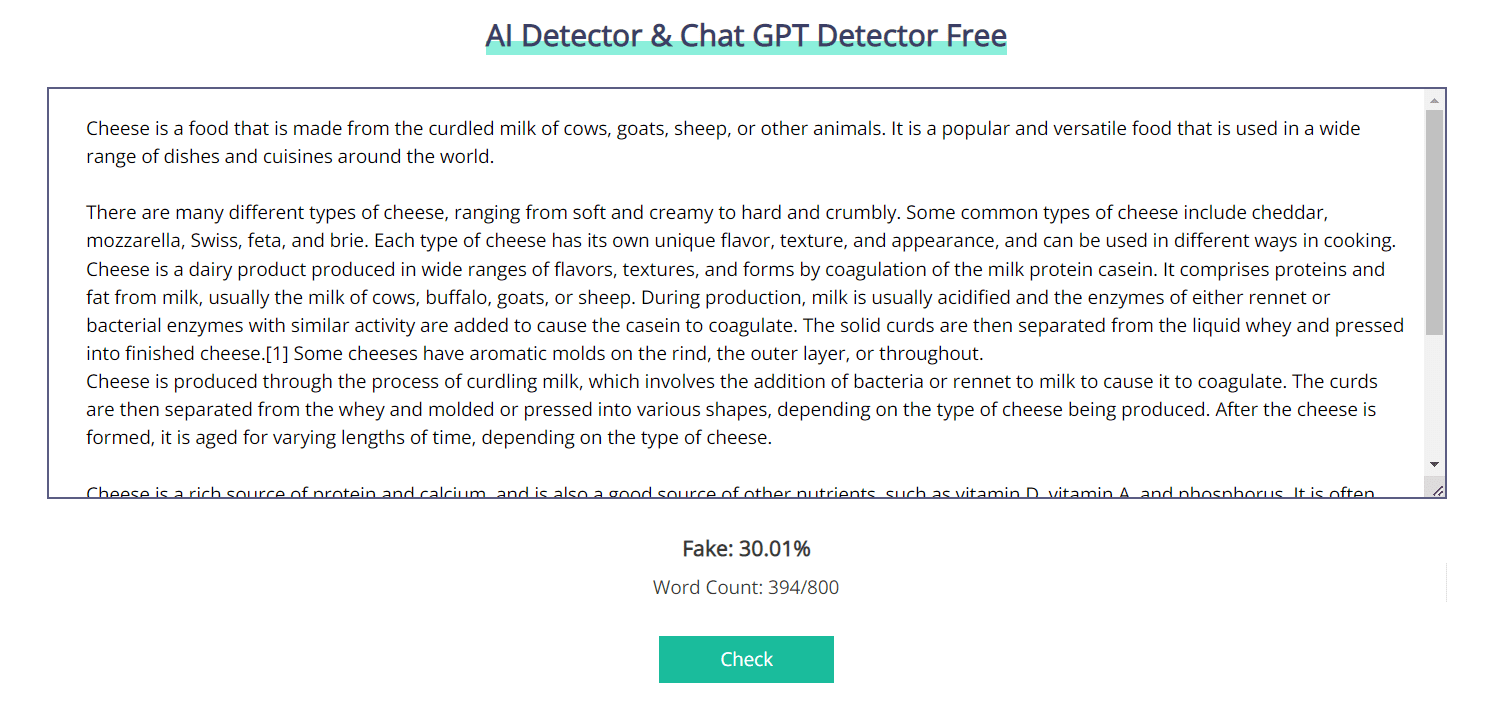
The problem with this free AI text detector is that you can’t run entire long-form articles through the tool in one go. Also, since it does not specify whether the fake score indicates AI content or plagiarised content, nor does it highlight the problematic sections, it is hard to judge. This tool can only give you an overall idea of how your content may come across.
Pricing: The Corrector App AI detector is free to use.
9. Sapling AI Detector
Sapling AI is a language model tool that helps craft better messages for business communication, and they have also launched an AI content detector on the platform. The Sapling AI Detector helps identify if any text has been generated by tools like GPT 3.5 or ChatGPT.
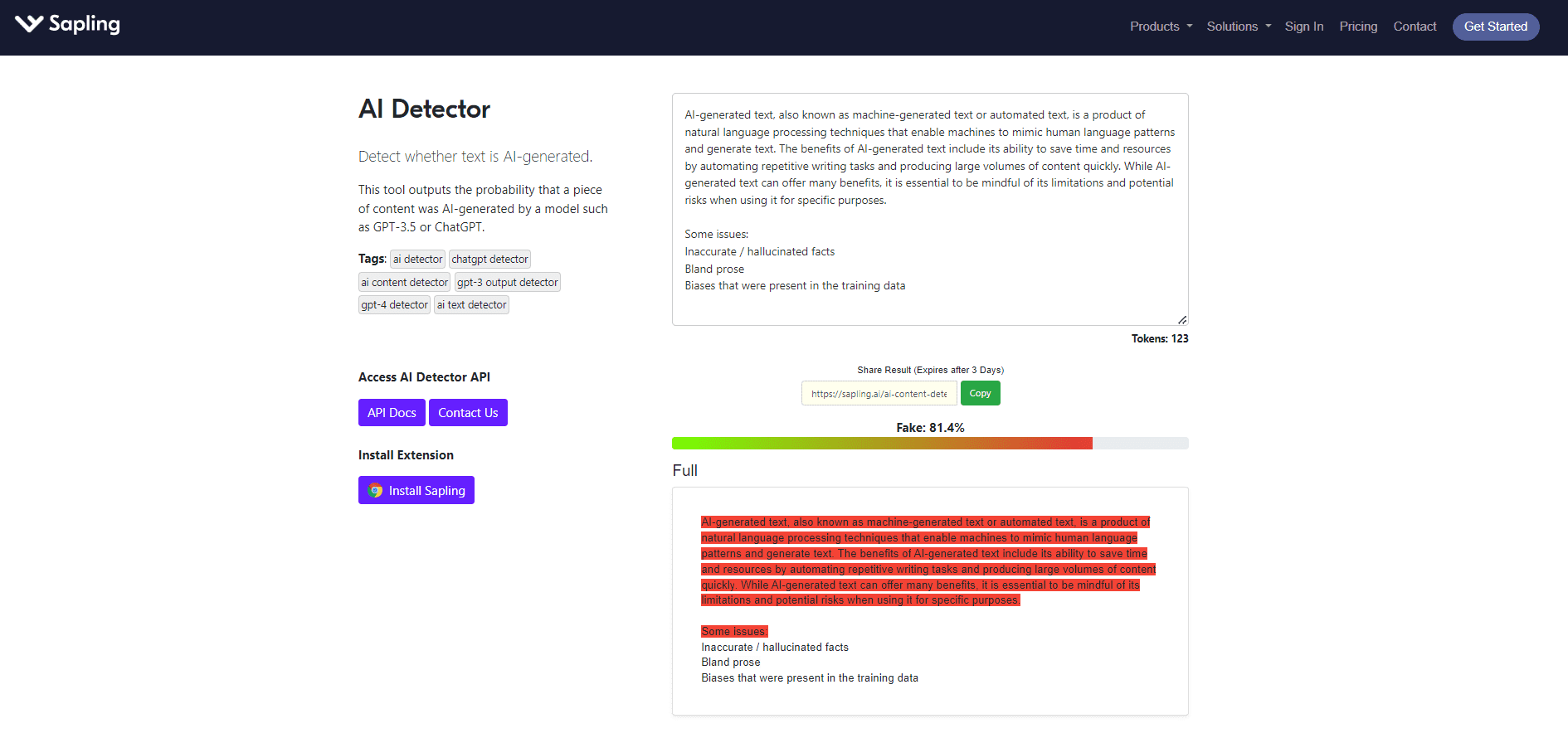
The tool gives you a percentage score and also highlights which section of content is likely AI-generated. In fact, there are two sections on the tool – one that highlights entire sections likely written by AI and the other that highlights sentences possibly generated by AI.
Like most of the popular AI content detector tools, Sapling also puts out a disclaimer that their results may not be entirely accurate and should not be used as the sole criterion for judging a content piece.
Pricing: Sapling has both free and paid versions. The AI detector in the paid plan, priced at $25 per month, allows for longer queries. The tool has a Chrome extension as well.
10. GLTR
GLTR or Giant Language model Test Room is an open-source AI content detection tool built in the MIT-IBM Watson AI lab and Harvard NLP, that lets you run tests to identify AI content. The working principle of the tool is quite interesting. It highlights the text in different colors based on how likely each word is to have been predicted by an AI writing tool based on the context to the left of the word. So if a word is highlighted in green, it indicates the word is among the Top 10 most likely words generated by AI. Yellow indicates Top100, Red indicates Top 1,000, and words that are not likely predicted by an AI tool are marked in purple.
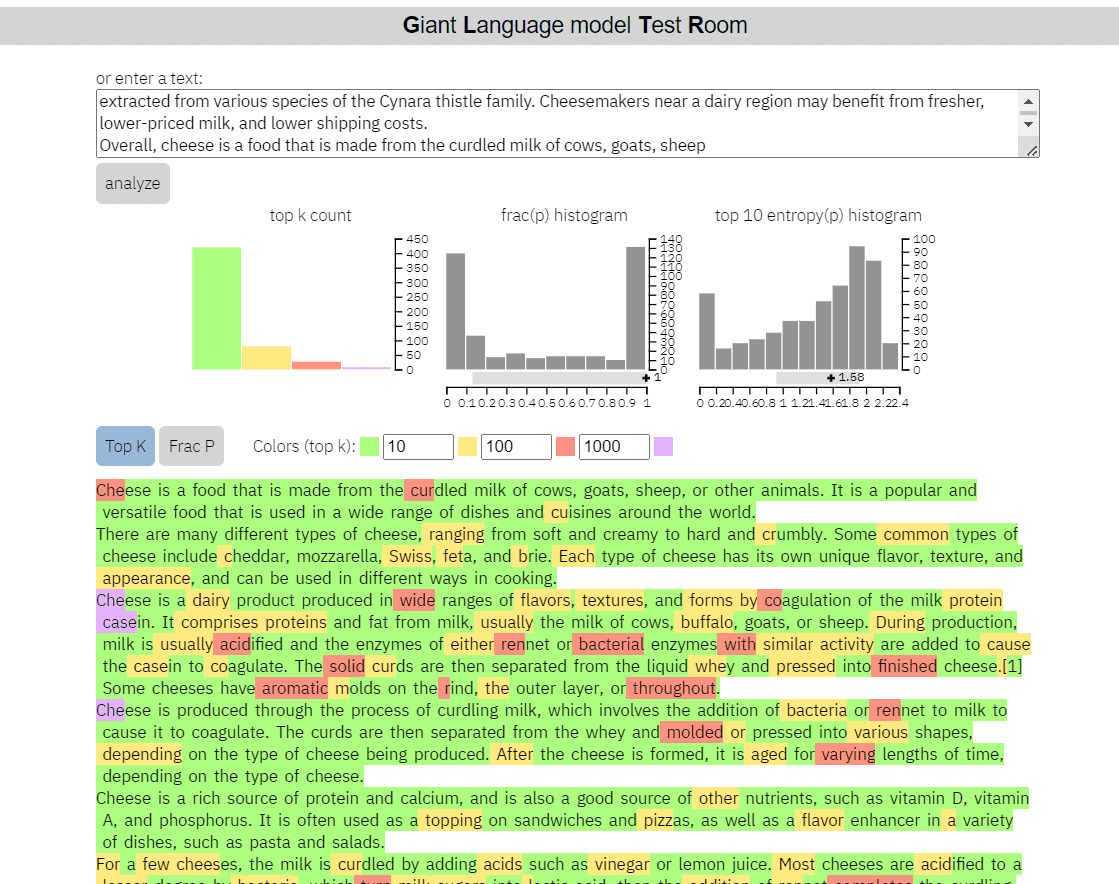
The tool was built in 2019 to detect GPT 2 text, so it may not give you very accurate results with AI content from more advanced versions of GPT.
Pricing: GLTR is free to use.
Wrapping up
No present AI content detection tool can give you highly accurate results. This means that whether you’re a publisher trying to verify if the content you’re publishing is original and human-written, or a content marketer trying to avoid any penalties for using AI to generate content, remember that none of these tools offer the clearest answer. These AI content detector tools will help you check for the likelihood that some content was generated by AI, but in the end, you have to use your own judgment to pass or reject a piece.
The most important factor to look for is quality. If the content offers value to the audience, answers the right questions, and shows no bias or inaccuracies, it does not matter whether it is human-written or AI-generated. Google wants helpful content and your SEO rankings do not suffer because of AI content as long as it is helpful. So use your favorite AI writing tool with confidence and ensure quality in your content, and if you ever need them, these AI content detection tools are here to help.




